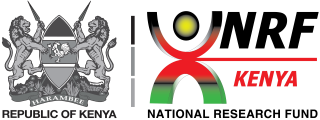Publication: Cost-benefit Analysis for a Containerized MBR System for Treatment of Fish Processing Wastewater for Industries in Kisumu, Kenya and Comparison to Wastewater Stabilization Ponds and Activated Sludge Process
Loading...
Total Views 0
total viewsTotal Downloads 4
total downloadsDate
2020-08-16
Journal Title
Journal ISSN
Volume Title
Funder
Publisher
Boffin Access Limited
Cite this Item
Abstract
The study aimed to calculate a cost benefit analysis for a containerized membrane
bioreactors (MBR) system with flow capacity of 10m3 per day, suitable for use by fish
industries within urban settlements such as Kisumu city in Kenya where land is scares and
expensive. Further a comparative cost analysis for a containerized MBR system, activated
sludge process (ASP) and wastewater stabilization ponds (WSP) treatment systems was
conducted relative to treatment volume to determine their economic viability. The cost
benefit analysis was calculated as the difference between total input and total output. The
total input was the sum of capital expenditure (CAPEX) and operation expenditure (OPEX)
while the total output was the cost per m3 of treated water generated and reused over the
course of the plant life. The comparative analysis was conducted using basic cost model
equations. The MBR system had a cost benefit of 13.1 €/m3d-1 which is approximately ≥
99% with an assumption that all treated water generated is reused on site. The cost per
m3 of treated water was estimated at 1.32€/m3d-1. The results obtained from the correlation
cost curves demonstrated that MBR systems with flow capacity of 10m3d-1 to 45m3d-1
are more economical in terms of CAPEX relative to ASP and WSP whose investment cost
is driven higher by cost of land. Correlation cost curves showed a high OPEX for MBR
systems attributed to high energy requirement. However, MBR systems encourage reuse
of the treated water thus becomes economical in the long run over the course of the plant
life. Containerized MBR systems were found to be more appropriate for use by industries
operating in the urban centers in Kisumu where land is expensive, relative to ASP and WSP
that require high capital cost for acquiring land and for construction.
Description
Keywords
Cost benefit analysis, membrane bioreactor, Fish industries
